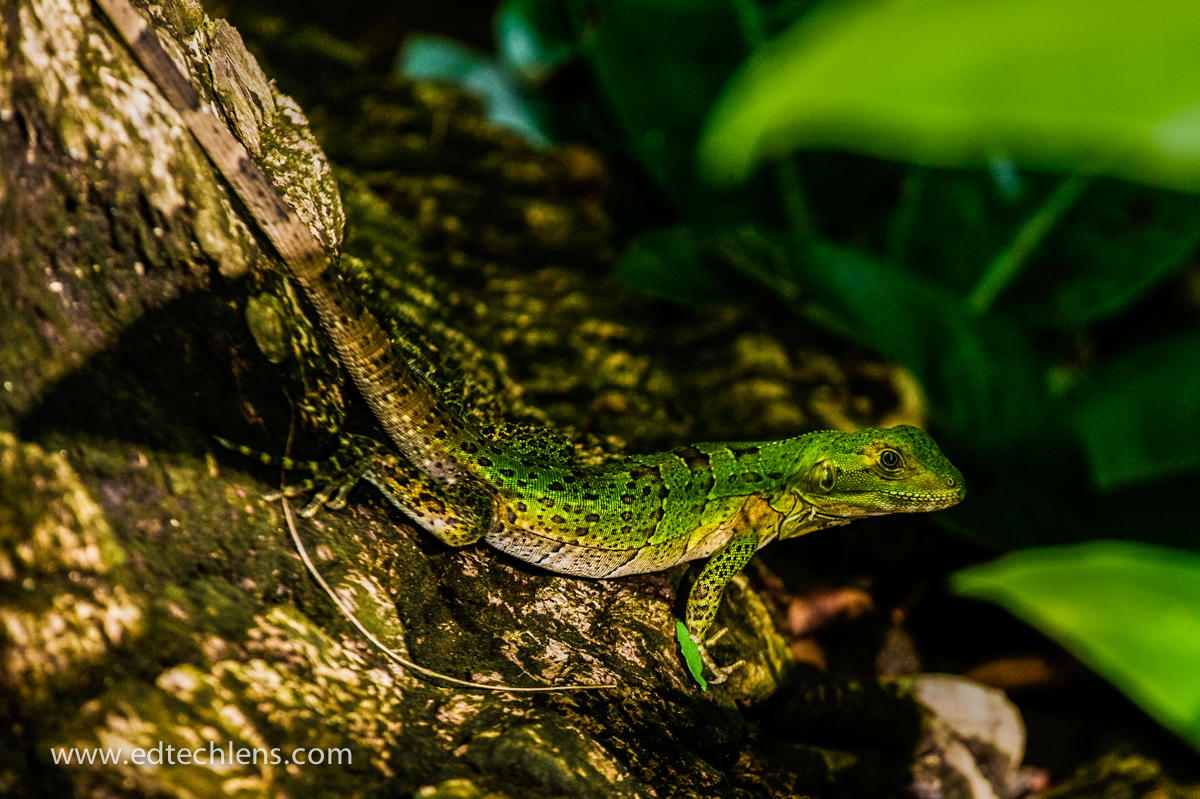The word camouflage comes from the French word camoflet which means "to disguise." To use camouflage or to be camouflaged, is the process of disguising or hiding oneself, usually from an enemy.
As you might imagine, this process can come in very handy in the rainforest. For many animals, being able to camouflage themselves allows them to survive in an environment that is not always friendly. In nature, animals will use camouflage to take on the colors of an inanimate object. So, by looking like a leaf, or the bark on a tree, an animal can safely hide in plain sight. Camouflage makes it more difficult then for predators to find their prey.
As you might imagine, this process can come in very handy in the rainforest. For many animals, being able to camouflage themselves allows them to survive in an environment that is not always friendly. In nature, animals will use camouflage to take on the colors of an inanimate object. So, by looking like a leaf, or the bark on a tree, an animal can safely hide in plain sight. Camouflage makes it more difficult then for predators to find their prey.

How does camouflage work exactly?
For many animals, camouflage in part is determined by the animal's physical body and its behavior. For example, camouflage for an animal with fur will be different than a reptile which has scales. The environment too, plays an important role. Many animals just blend in with their habitat. Certain fish are blue-grey in color to match the color of the deeper depths of the ocean, while the colors of deer, squirrels and bears are more in keeping with the forests. It is important to remember too that nature never gives an animal an incorrect camouflage.
Something to Think About: In what ways does nature help to make sure that animals can protect themselves? Why is this important?
For many animals, camouflage in part is determined by the animal's physical body and its behavior. For example, camouflage for an animal with fur will be different than a reptile which has scales. The environment too, plays an important role. Many animals just blend in with their habitat. Certain fish are blue-grey in color to match the color of the deeper depths of the ocean, while the colors of deer, squirrels and bears are more in keeping with the forests. It is important to remember too that nature never gives an animal an incorrect camouflage.
Something to Think About: In what ways does nature help to make sure that animals can protect themselves? Why is this important?
Rainforest Kids Science curriculum connection: Unit 2, Chapter 1, GK-5

